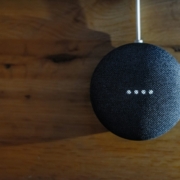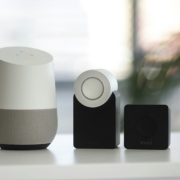AI Demystified: What to Know About the Current Tools on the Market in 2025
Walk into almost any IT department right now, and you’ll hear the same conversation at least once a week: “Have you tried that new AI tool yet? I heard it’s a game-changer.”
The truth is that the market is buzzing with promise and noise. A recent McKinsey survey shows that 78% of companies now use AI in some form, and that number is climbing.
Plenty of software promises to slash workloads, automate everything, and make teams ‘future-proof.’ Some deliver on that promise. Others feel rushed to market just to ride the hype. For IT businesses, knowing the difference is essential to staying relevant.
Why AI Feels Different This Time
AI, of course, isn’t new. However, something has shifted over the last two years. Models have become better at understanding context, generating original content, and even juggling multiple formats at once.
Under the hood, the big three technologies driving this shift are:
- Machine Learning (ML): These are the systems that improve with every dataset they touch. It’s what makes recommendation engines get eerily accurate over time.
- Natural Language Processing (NLP): The bit that lets a machine understand your request when you type, “Can you pull the latest metrics from that report?” and not just spit out a keyword search.
- Generative AI: The creative side of AI that builds something from scratch: a paragraph, a code snippet, an image, or even a full video.
The “multimodal” wave, where one tool can manage text, images, audio, and video without switching modes, is what’s pulling this technology out of niche use cases and into daily operations. It’s also why even cautious IT managers are starting to experiment.
The Tool Categories Worth Knowing
If you try to track every AI launch, you’ll burn out. Instead, it helps to think in broad categories and pick a few to watch.
1. Chatbots & Virtual Assistants
Not the clunky, one-question-at-a-time bots we remember from a few years ago.
- ChatGPT now handles images, audio, and real-time conversation, and it remembers your preferences over time.
- Google Gemini slots directly into Gmail, Sheets, and Docs. It is handy if you already live in Google Workspace.
- Grok AI leans toward problem-solving and data-heavy reasoning, pulling in live info when needed.
2. Content Creation
For marketing, documentation, or client proposals, the tools below can shave hours off a job.
- Jasper AI: Aimed squarely at marketers, with built-in SEO and formatting help.
- Anyword: Used to tweak tone for specific audiences.
- Writer: Used to keep enterprise-level brand voice consistent.
3. Image & Design
From mockups to campaign graphics, AI visuals are no longer a novelty.
- Midjourney is the favorite for striking, artistic visuals.
- Stable Diffusion gives you full creative control if you’ve got the technical chops.
- DALL·E 3 is simple to use inside ChatGPT for quick edits and iterations.
- Google Imagen 3 is precise and can handle prompts in multiple languages.
- Adobe Firefly keeps everything legally safe for commercial projects and feeds straight into Photoshop.
4. Video & Storytelling
Not just for marketing teams anymore. Training, onboarding, and even client walkthroughs benefit here.
- Runway ML combines AI image generation with video editing.
- Descript and Filmora handle editing, transcription, and polishing without requiring a pro studio.
5. Search & Research
Finding the right information can matter more than creating something new.
- Perplexity AI blends live search with AI summaries so you’re not guessing about accuracy.
- Arc Search speeds up web research with on-the-fly summaries.
6. Productivity & Collaboration
These are the quiet workhorses. They include:
- Notion AI and Mem: Used to surface the right knowledge at the right time.
- Asana, Any.do, and BeeDone: Project tools used to schedule and keep track of tasks.
- Fireflies and Avoma: These meeting assistants can take notes so your team can actually talk.
- Reclaim and Clockwise: These calendar managers make meetings less of a Tetris game.
- Shortwave and Gemini: Email helpers for Gmail to keep inboxes sane.
Where IT Businesses Can Actually Win
The real advantage isn’t “using AI.” It’s using it to make something easier, faster, or better for either your team or your clients. That might be automating repetitive monitoring tasks, generating clearer client reports, or cutting turnaround time for proposal writing.
It’s not without its challenges:
- Integration: The coolest new tool is useless if it can’t connect to your stack.
- Data accuracy: AI still makes mistakes; fact-checking is non-negotiable.
- Security: If a tool sends your client data outside your environment, you need to know exactly how it’s stored and processed.
- Adoption curve: Even great tools flop if nobody takes the time to learn them.
Getting Started Without Wasting Time
If you’re evaluating AI for your IT business, here’s a simple starting path:
- Pick one problem that’s slowing you down. Maybe your project documentation is always late, or client Q&A eats up hours.
- Test two or three tools aimed at solving that problem. Use the free or trial tiers; run them against real scenarios.
- See how they play with your systems. Integration is often the make-or-break factor.
- Roll out slowly. One team, one workflow, one clear measure of success. If it works, expand.
It’s tempting to load up a dozen tools and hope they magically boost productivity. More often, that leads to confusion, redundant features, and frustrated staff.
A Final Thought (and a Bit of Caution)
AI isn’t going away, and ignoring it won’t make the competitive pressure disappear. The current lineup of tools can be incredibly powerful, but they’re not magic. Think of them like a new hire: They can do great work, but they need guidance, guardrails, and a clear role.
Start with the jobs that nobody loves doing, the ones that are repetitive but still important. Let AI take the first draft, the first pass, or the heavy lifting. Keep the oversight with your team. That’s where it stops being hype and starts being useful.
If you’re not sure where to begin, try one experiment this quarter. Small steps now will make bigger moves easier later.
Contact us if you want help figuring out which AI tools actually make sense for your IT business and which ones you can safely skip.
—
This Article has been Republished with Permission from The Technology Press.










